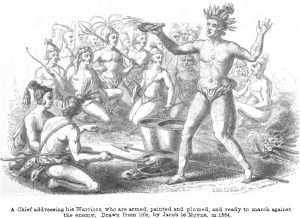The Migration of Alabama and Muscogee Indians East
It has been seen that the Indians living in that part of Alabama through which De Soto passed, were the Coosas, inhabiting the territory embraced in the present counties of Benton, Talladega, Coosa, and a portion of Cherokee; the Tallases, living upon the Tallapoosa and its tributary streams; the Mobilians extending from near the present city of Montgomery to the commercial emporium which now bears their name; the Pafallayas or Choctaws, inhabiting the territory of the modern counties of Green, Marengo, Tuscaloosa, Sumpter and Pickens; and, in the present State of Mississippi, the Chickasaws, in the valley of the Yalobusha; … Read more



